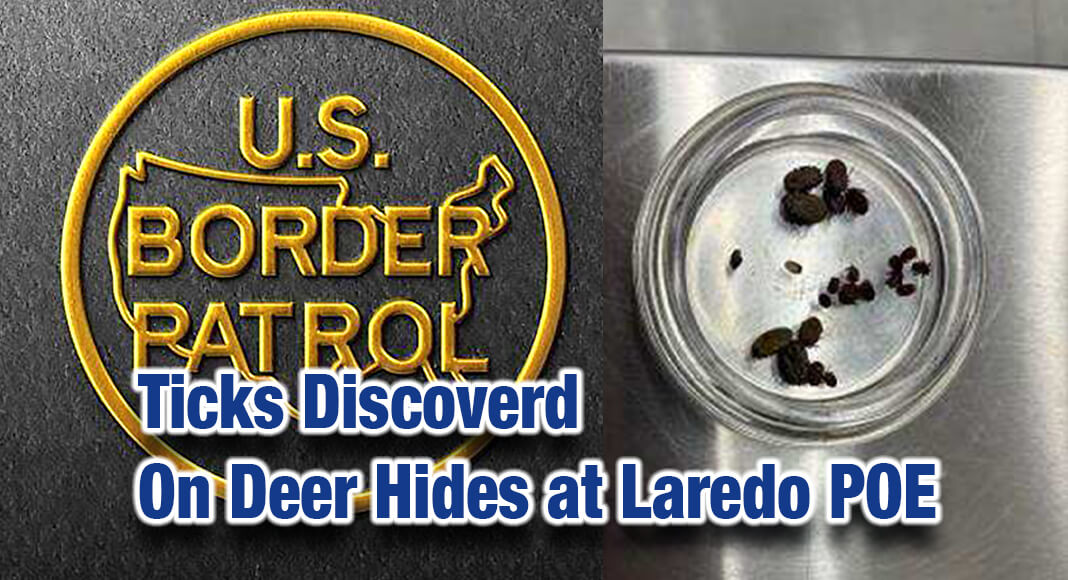
Texas Border Business
LAREDO, Texas — U.S. Customs and Border Protection agriculture specialists this weekend intercepted whitetail trophy deer hides infested with a total of 21 ticks at the Colombia-Solidarity Bridge.
“As the deer hunting season in Mexico starts to draw to a close, our frontline CBP agriculture specialists are especially vigilant in inspecting arriving trophy deer hides to make sure that the cattle fever tick does not enter the U.S. and pose a risk to the domestic cattle industry,” said Port Director Alberto Flores, Laredo Port of Entry. “This significant tick interception in deer hides reaffirms CBP’s commitment to protecting American agriculture and upholding U.S. economic security by preventing pests which can carry the cattle fever tick from entering the U.S.”
On Saturday, Jan. 6 at the Colombia-Solidarity Bridge, a pickup truck was referred for secondary agricultural examination after the driver declared hunting trophies, including deer antler racks and hides. Subsequent inspection of the hides by CBP agriculture specialists revealed a total of 21 ticks (2 live, 19 dead) within the hides. The hides were refused entry due to the tick discovery and were abandoned by the driver at the port. The antler racks were determined to be in compliance with U.S. Fish and Wildlife Service regulations and allowed to enter.
The importation of hunter-harvested Mexican whitetail deer trophies is regulated by U.S. Department of Agriculture, Animal and Plant Health Inspection Service, USDA Veterinary Services, as well as U.S. Fish & Wildlife Service. Such trophies must adhere to U.S. laws and regulations, including the Convention on International Trade in Endangered Species of Wild Fauna and Flora guidelines, to prevent the spread of disease and must be presented for inspection. Of particular concern is the spread of Bovine Babesiosis, commonly known as Texas cattle fever. Mexican whitetail deer are hosts to the cattle fever tick, known as Rhipicephalus (formerly Boophilus) annulatus and R. microplus that spreads this pathogen. Once infected, cattle without prior exposure experience anemia, fever and enlargement of the spleen and liver and have a mortality rate of up to 90%. USDA estimates that, left uncontrolled, Texas cattle fever could cost the livestock industry approximately $1 billion annually.
CBP agriculture specialists work diligently to fulfill CBP’s agriculture mission by excluding harmful pests and diseases from becoming established in the U.S. For more information about CBP’s agriculture mission, click on the following link. Further information about USDA APHIS’s Cattle Fever Tick Eradication Program can be found here. More information on Texas cattle fever tick and statewide eradication efforts can be found here.













